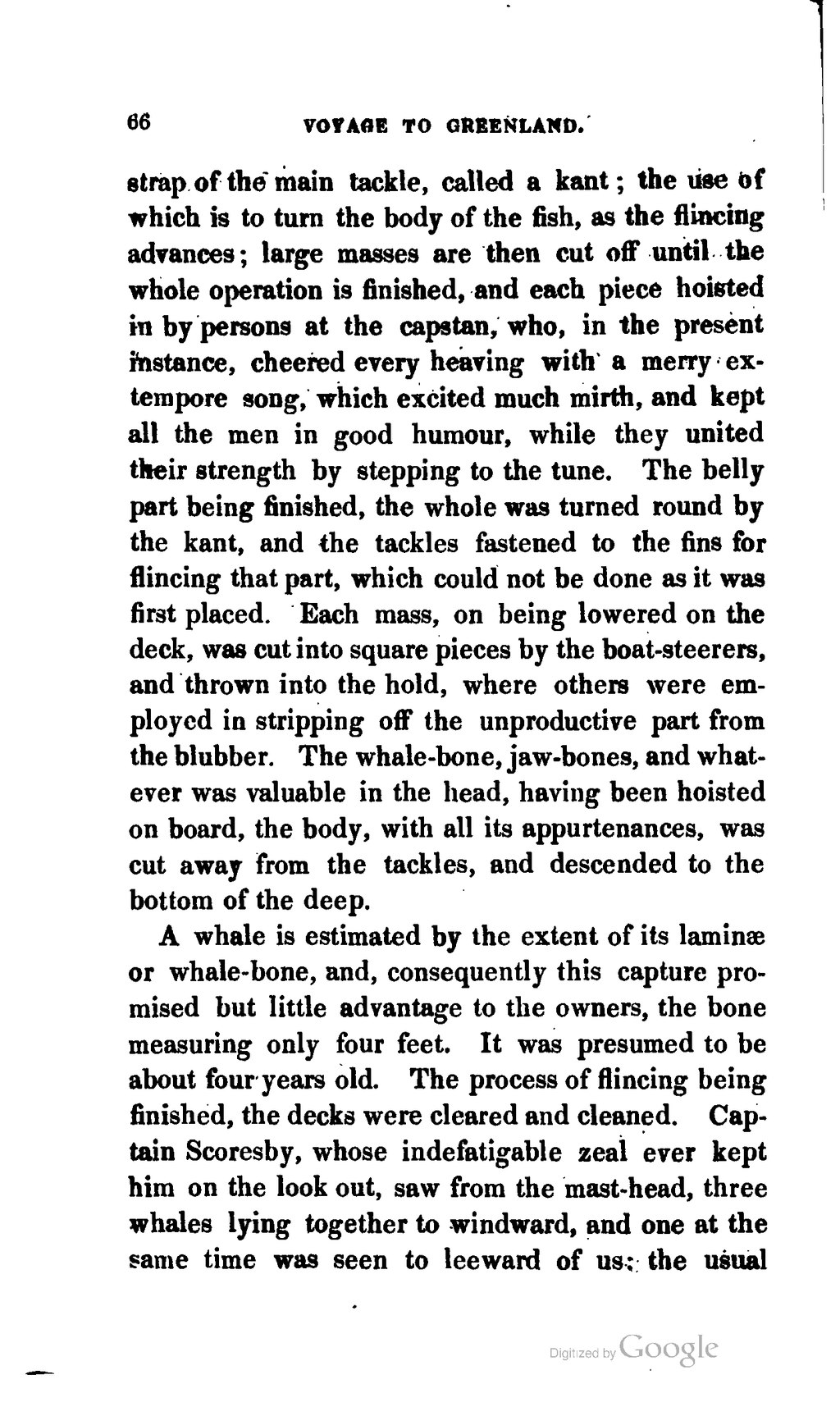strap of the main tackle, called a kant; the use of which is to turn the body of the fish, as the flincing advances; large masses are then cut off until the whole operation is finished, and each piece hoisted in by persons at the capstan; who, in the present instance, cheered every heaving with a merry extempore song, which excited much mirth, and kept all the men in good humour, while they united their strength by stepping to the tune. The belly part being finished, the whole was turned round by the kant, and the tackles fastened to the fins for flincing that part, which could not be done as it was first placed. Each mass, on being lowered on the deck, was cut into square pieces by the boat-steerers, and thrown into the hold, where others were employed in stripping off the unproductive part from the blubber. The whale-bone, jaw-bones, and whatever was valuable in the head, having been hoisted on board, the body, with all its appurtenances, was cut away from the tackles, and descended to the bottom of the deep.
A whale is estimated by the extent of its laminæ or whale-bone, and, consequently this capture promised but little advantage to the owners, the bone measuring only four feet. It was presumed to be about four years old. The process of flincing being finished, the decks were cleared and cleaned. Captain Scoresby, whose indefatigable zeal ever kept him on the look out, saw from the mast-head, three whales lying together to windward, and one at the same time was seen to leeward of us: the usual
